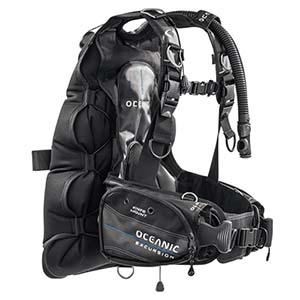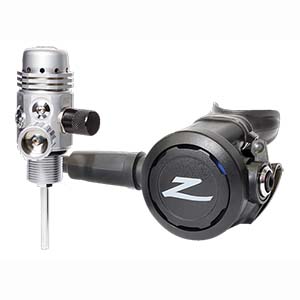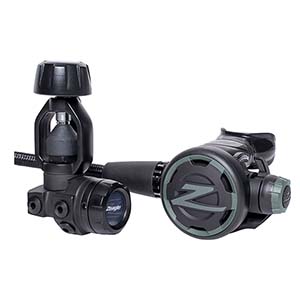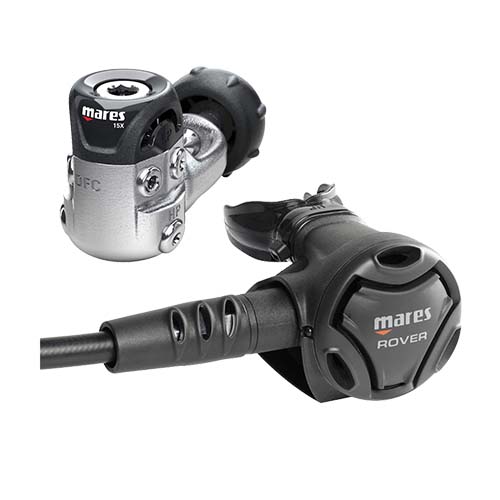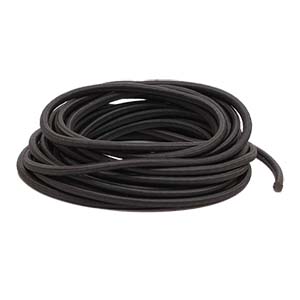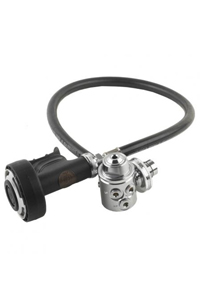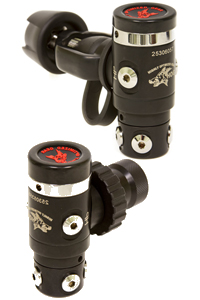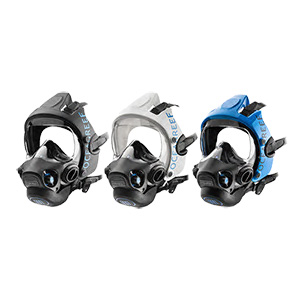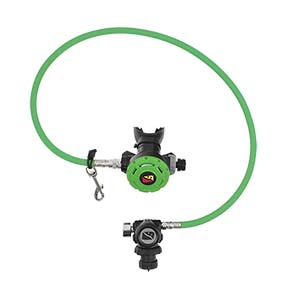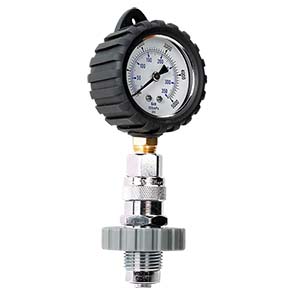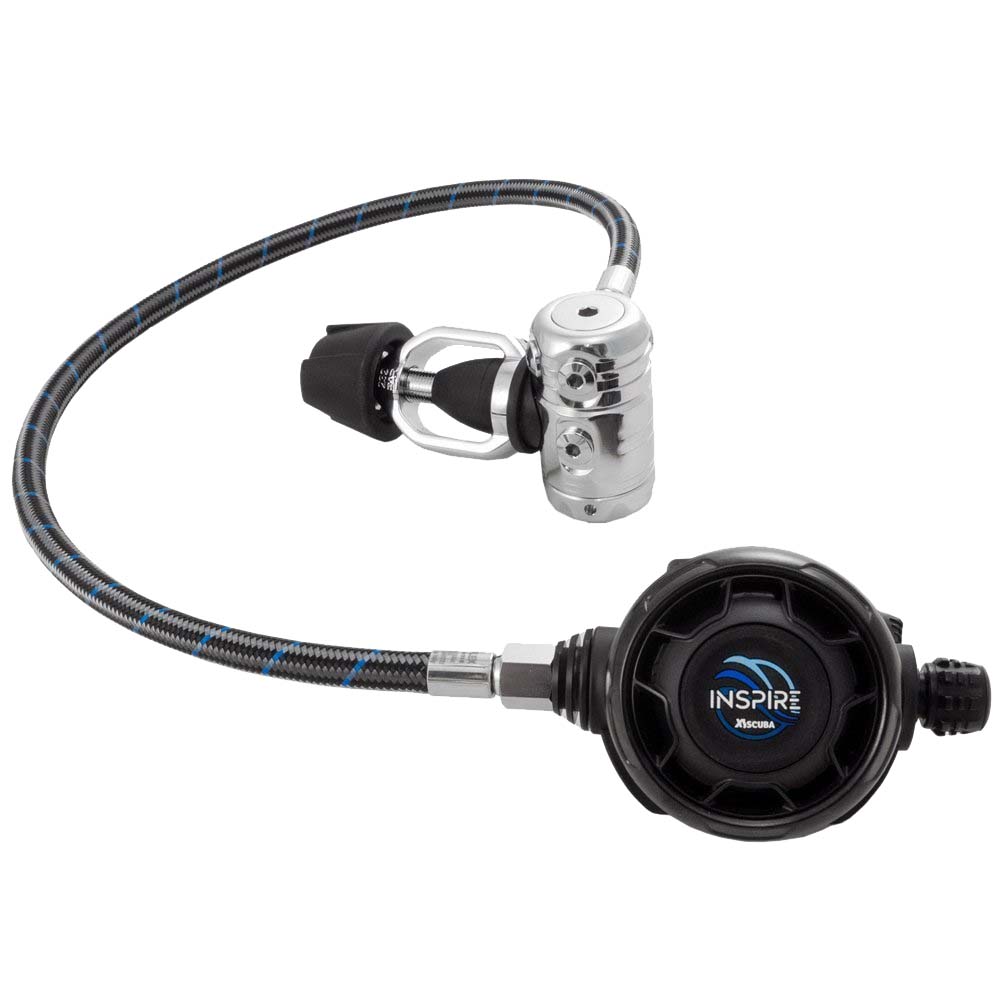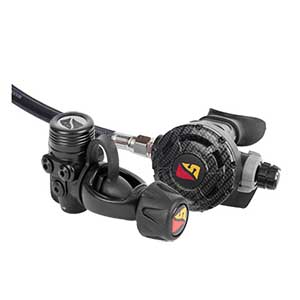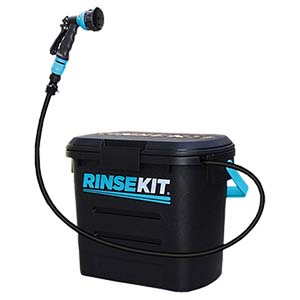Boyle's Law
Pressure Volume Relationships
We are used to living at 1 ATM of pressure, so we rarely even take notice of it. We normallydon't feel the pressure on us because the human body is primarily made up of liquid, and liquidsare basically non compressible. At times, however, we do notice changes of pressure, primarily inour ears. You may have noticed your ears "popping" when flying, driving in the mountains, oreven going up and down in elevators. This is because our ears have an air space in them, and air,like all other gases, is compressible.A gas will compress proportionately to the amount of pressure exerted on it. For example, if youhave a 1 cubic foot balloon and double the pressure on it, it will be compressed to 1/2 cubic foot. Increase the pressure by 4, and the volume will drop to 1/4 the size etc. This theory wasdiscovered by Sir Robert Boyle, a 17th century scientist. The theory known as Boyle's Lawstates: If the temperature remains constant, the volume of a given mass of gas is inverselyproportional to the absolute pressure.
Let's follow an example...
Suppose you had a balloon measuring one cubic foot at the surface of the water. This balloon isunder 1 ATM (14.7 psi) of pressure. If we push the balloon underwater, and take it to a depth of33 feet, it is now under 2 ATM of pressure (29.4 lbs) - 1 ATM of pressure from the air, 1 ATMof pressure from the water. Boyle's Law then tells us that since we have twice the absolutepressure, the volume of the balloon will be decreased to one half. It follows then, that taking theballoon to 66 feet, the pressure would compress the balloon to one third its original size, 99 feetwould make it 1/4 etc.
If we bring the balloon in the previous example back up to the surface, it would increase in sizedue to the lessening pressure until it reached the surface and returned to its one cubic foot size. This is because the air in the balloon is compressed from the pressure when submerged, butreturns to its normal size and pressure when it returns to the surface.
We will achieve the same result with an open container, such as an inverted bottle, as we do witha balloon. By inverting a bottle at the surface and descending with it, the pressure from thesurrounding water will compress the air and the bottle will start to fill with water. Even with noair escaping, the container will be half full of water at a depth of 33 feet due to the pressurecompressing the air to half its original volume.
Along with the volume of air in the balloon or container, the surrounding pressure will affect thedensity of the air as well. Density, simply stated, is how close the air molecules are packedtogether. The air in the balloon or container at the surface is at its standard density, but when wedescend to the 33-foot level where its volume is reduced to one half, the density has doubled. At66 feet, the density has tripled. This is because the pressure has pushed the air molecules closertogether.
Let's continue with this line of thinking and try an additional experiment. If we take our balloonand our open container down to 99 feet, we know that the density of air is four times what is wason the surface and the volume of air has been reduced to 1/4. Now at this depth, suppose weused a scuba tank and added air to the balloon until it returned to its original size. We will alsoblow air into the inverted container until it is completely full of air.
We know the air at this depth is 4 times denser than at the surface. This means when we ascendwith our balloon and container, the lessening pressure will make the air expand. This will havetwo different effects. The balloon will increase in size. It will attempt to grow to a size of 4 cubicfeet by the time it hits the surface. If this is beyond the capability of the balloon, it will pop. Theinverted container, however, will simply "bleed off" the expanding air that will harmlessly floataway as bubbles.
The main purpose of the proceeding material was to give you the theory behind the mostimportant rule in scuba diving... "Never hold your breath!" Your lungs can act very much like apair of balloons in your chest. As a breath hold diver (skin diver), if you fill your lungs with air atthe surface, hold your breath, and dive to a depth of 33 feet, the surrounding pressure willcompress your lungs to half of their original size. Upon ascending, they will return to normal size. If however, you descend to 33 feet and breath compressed air from a scuba tank, an ascent to thesurface could cause you lungs to over expand and you could seriously injure yourself.
This is easy to avoid, however, by simply not holding your breath which will let your lungs actlike the open container in the preceding example, and you will simply "bleed off" the expanding airand maintain a normal lung capacity.
Serving all of Dallas, Ft. Worth, Carrollton, Plano, Allen, The Colony, Frisco, Highland Park, Little Elm, Euless, Bedford, Grand Prairie, Farmers Branch, and the rest of the North Texas area... as well as World Wide!


